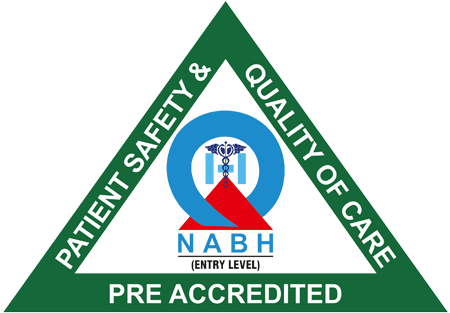Breastfeeding is natural, but it’s not always easy! Many new moms face challenges with latching, milk supply, nighttime feeding struggles, and more. But here’s the good news: with knowledge and preparation, you can make your nursing experience smoother and more enjoyable.
We’re breaking it all down for you with these breastfeeding secrets to help you build confidence as you nourish your baby. Get ready for practical tips, real solutions, and encouragement along the way!
Quick Takeaways for Breastfeeding Success:
- A deep latch is key to reducing pain and increasing milk flow.
- Skin-to-skin time during the first hour after birth boosts milk production.
- Struggling with supply? Hydration, lactation-friendly foods, and power pumping can work wonders.
- Painful nipples are common but treatable with proper care and positioning.
- Pumping and storing milk doesn’t have to be complicated—we’ve got you covered!
The Basics of Breastfeeding
Why is Breastfeeding Important?
Breastfeeding is more than just nourishment; it’s packed with benefits for both the baby and the mom.
For Babies:
- Boosts immunity by passing antibodies to fight infections.
- Supports healthy digestion, reducing risks of diarrhea and constipation.
- Promotes brain development, thanks to key nutrients like DHA.
For Moms:
- Helps with postpartum weight loss by burning extra calories.
- Balances hormones and reduces the risk of postpartum depression.
- Lowers the risk of breast and ovarian cancers later in life.
Did you know that the World Health Organization (WHO) recommends exclusive breastfeeding for the first six months of a baby’s life, followed by complementary feeding along with continued nursing up to two years or beyond?
Understanding How Breast Milk Production Works
Breastfeeding works on a supply and demand system. The more your baby nurses, the more milk your body produces. Two key hormones play a role here:
- Prolactin: Stimulates your body to make milk.
- Oxytocin: Helps release milk during feeding, known as the “let-down” reflex.
Frequent feeding, proper latching, and even skin-to-skin contact can all help optimize milk production.
Looking for expert maternity care? Choose one of the best hospitals in East Marredpally for personalized breastfeeding support and postpartum care. Book an appointment with top specialists today!
Secret #1: The Golden Hour – Why the First Hour is Crucial
That first hour after birth is magical! Holding your baby skin-to-skin not only helps regulate their temperature and heartbeat but also encourages early latching. Early latching stimulates milk production and helps establish breastfeeding.
What if Early Breastfeeding Isn’t Possible?
If complications delay nursing, don’t panic. You can hand-express colostrum (the first nutrient-rich milk) and encourage bonding and milk flow with continued skin contact. Every drop counts!
Secret #2: The Perfect Latch – The Game-Changer
A good latch is everything. It prevents pain and ensures your baby gets enough milk. Here’s a step-by-step guide to achieving a deep latch:
- Position your baby tummy-to-tummy with you.
- Hold your breast, flattening your areola slightly like a sandwich.
- Wait for your baby to open their mouth wide.
- Gently bring your baby to your breast (not the other way around!).
Signs of a Good Latch:
- No pain during feeding (it might feel like a tug but shouldn’t hurt).
- The baby’s chin touches your breast.
- You see their cheeks move rhythmically.
Positions to Try: Cradle hold, football hold, and side-lying position are all excellent options for getting comfortable and improving latch.
Secret #3: Common Breastfeeding Challenges & Solutions
Cracked or Sore Nipples
Painful nipples? You’re not alone. This often happens due to poor latching. Fixing the latch and using plenty of nipple cream can help.
Quick Remedies:
- Apply lanolin cream or coconut oil after each feed.
- Use warm compresses to ease discomfort.
- Try expressing a few drops of breast milk to soothe and heal naturally.
Low Milk Supply
Worried about not making enough milk? Here’s how to boost production naturally:
- Nurse frequently or use a pump to stimulate supply.
- Consider “power pumping” (10 min pump, 10 min rest for 1 hour).
- Include lactogenic foods like oatmeal, garlic, and fenugreek in your diet.
Breast Engorgement & Clogged Ducts
Engorgement happens when breasts become overly full. It can lead to clogged ducts, which are painful lumps.
Relief Tips:
- Massage the area while feeding or pumping.
- Warm showers or compresses can soften hardened milk.
- Avoid restrictive bras, which can worsen clogging.
Left untreated, clogged ducts can cause mastitis (a painful infection), so monitor symptoms like redness or fever and seek medical help if needed.
At Shenoy Hospital, we provide compassionate lactation support, expert maternity care, and guidance to make breastfeeding easier. Take the first step toward a confident nursing journey—schedule a consultation now!
Secret #4: Diet & Lifestyle Tips for Better Milk Supply
What you eat and how you take care of yourself impacts milk flow!
Top Foods for Milk Supply:
- Oatmeal
- Fenugreek and fennel seeds
- Garlic
- Leafy greens
Other Tips:
- Stay hydrated (aim for at least 8-10 glasses of water daily).
- Avoid alcohol and limit high-mercury fish.
- Get as much rest as you can to keep stress levels low.
Secret #5: Pumping & Storing Breast Milk
Pumping gives you flexibility. To start pumping, introduce it around 3-4 weeks if breastfeeding is well-established.
Storage Guidelines:
- Room Temperature (77°F): Use within 4 hours.
- Fridge (40°F): Use within 4 days.
- Freezer (-4°F): Use within 6 months (12 months at most).
Label milk with the date, and thaw gently in warm water. Never refreeze previously thawed milk!
Secret #6: Nighttime Breastfeeding Hacks
Night feeds can feel overwhelming. Simplify things by creating a cozy feeding area with a dim light and comfortable chair.
Co-Sleeping Safety: If you choose to co-sleep, follow strict safety guidelines like avoiding soft bedding and ensuring your baby sleeps on their back.
Want fewer disruptions? Cluster feeding your baby in the evening can help them sleep longer stretches at night.
Secret #7: Breastfeeding & Returning to Work
You can still breastfeed while working! Pumping during breaks helps maintain your supply.
Best Practices:
- Pump every 3-4 hours while at work.
- Invest in a good double electric pump and nursing-friendly tops.
- Keep pumping sessions stress-free by creating a relaxing routine.
Remember, in many places, you have the legal right to pump at work in a private space.
Secret #8: Weaning the Right Way
Weaning is a big milestone! Start slowly by dropping one feeding session at a time.
Gradual Weaning Benefits:
- Prevents engorgement for you.
- Allows your baby to adapt emotionally and nutritionally.
If your child is reluctant, offer extra cuddles and comfort during this transition.
A smooth breastfeeding experience starts with the right support. Visit a leading maternity care center in Secunderabad for expert guidance on latching, milk supply, and newborn care. Contact us today!
FAQs
1. How long should a breastfeeding session last?
Sessions typically last 15-20 minutes, but babies may feed longer during growth spurts.
2. What are the best positions for breastfeeding?
Cradle, cross-cradle, side-lying, and football holds work well for most moms.
3. How do I know if my baby is getting enough milk?
Look for at least 6-8 wet diapers daily and consistent weight gain.
4. Can I drink coffee or alcohol while breastfeeding?
Moderation is key. A cup of coffee or an occasional glass of wine is fine, but wait 2 hours before nursing if you drink alcohol.
5. What are the best supplements for increasing breast milk production?
Fenugreek, moringa, and brewer’s yeast are popular choices. Consult your doctor before starting any supplement.
Final Thoughts
Breastfeeding is a learning process, and every parent’s journey is unique. Trust yourself, take it one step at a time, and remember that it’s perfectly okay to seek help along the way! Lactation consultants can provide expert guidance on latch techniques and positioning, while family members and friends can offer encouragement and practical support.
Joining local or online support groups can also be a great way to connect with others, share experiences, and pick up valuable tips as you find your rhythm. You’re not alone in this journey—help is always available when you need it.
Share:



